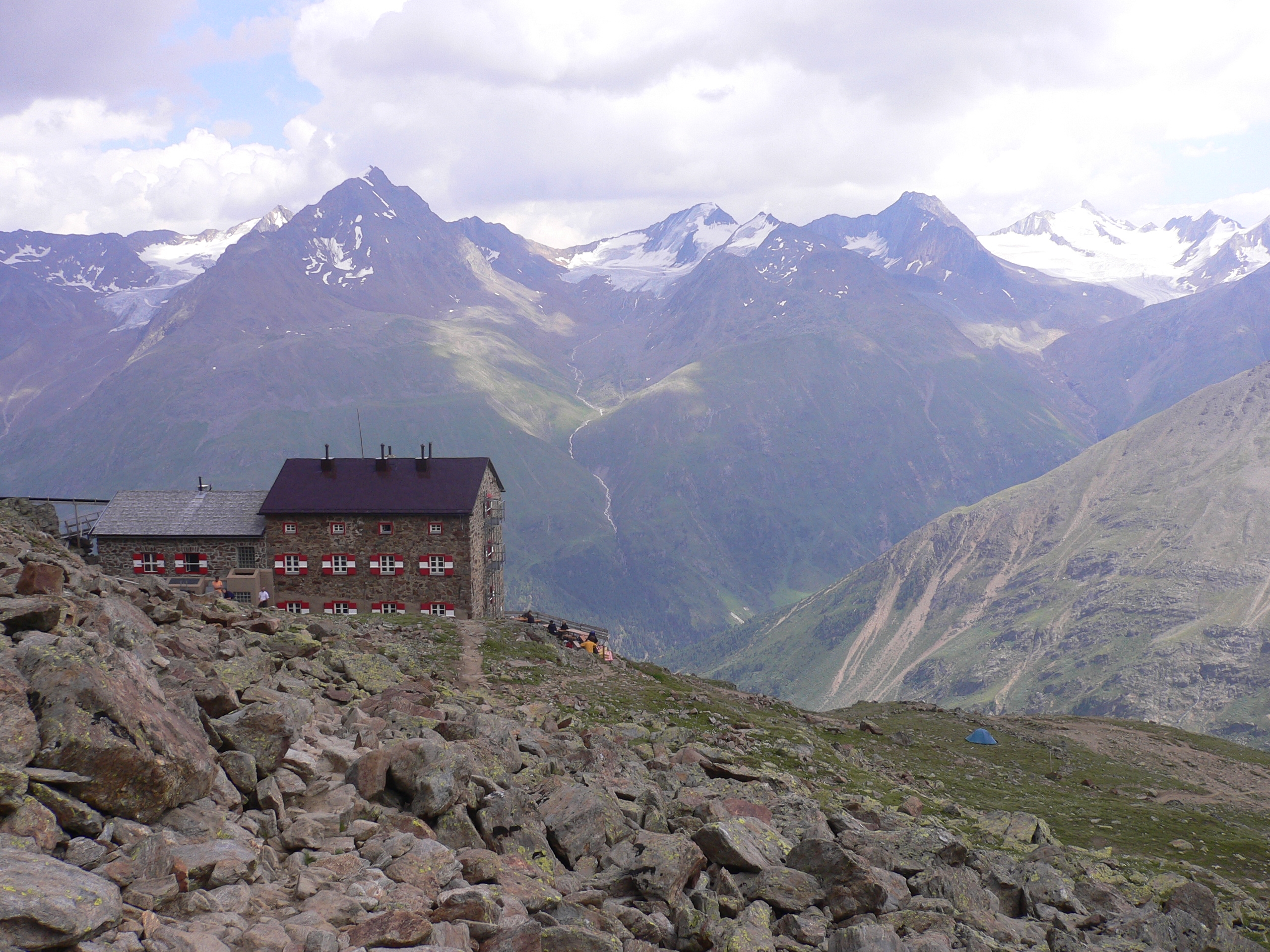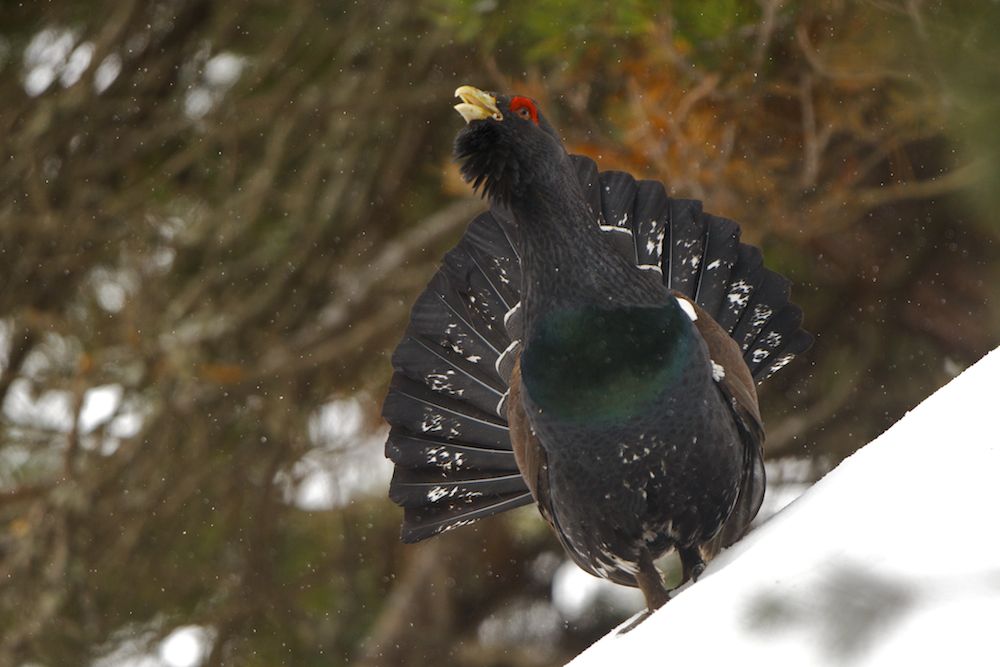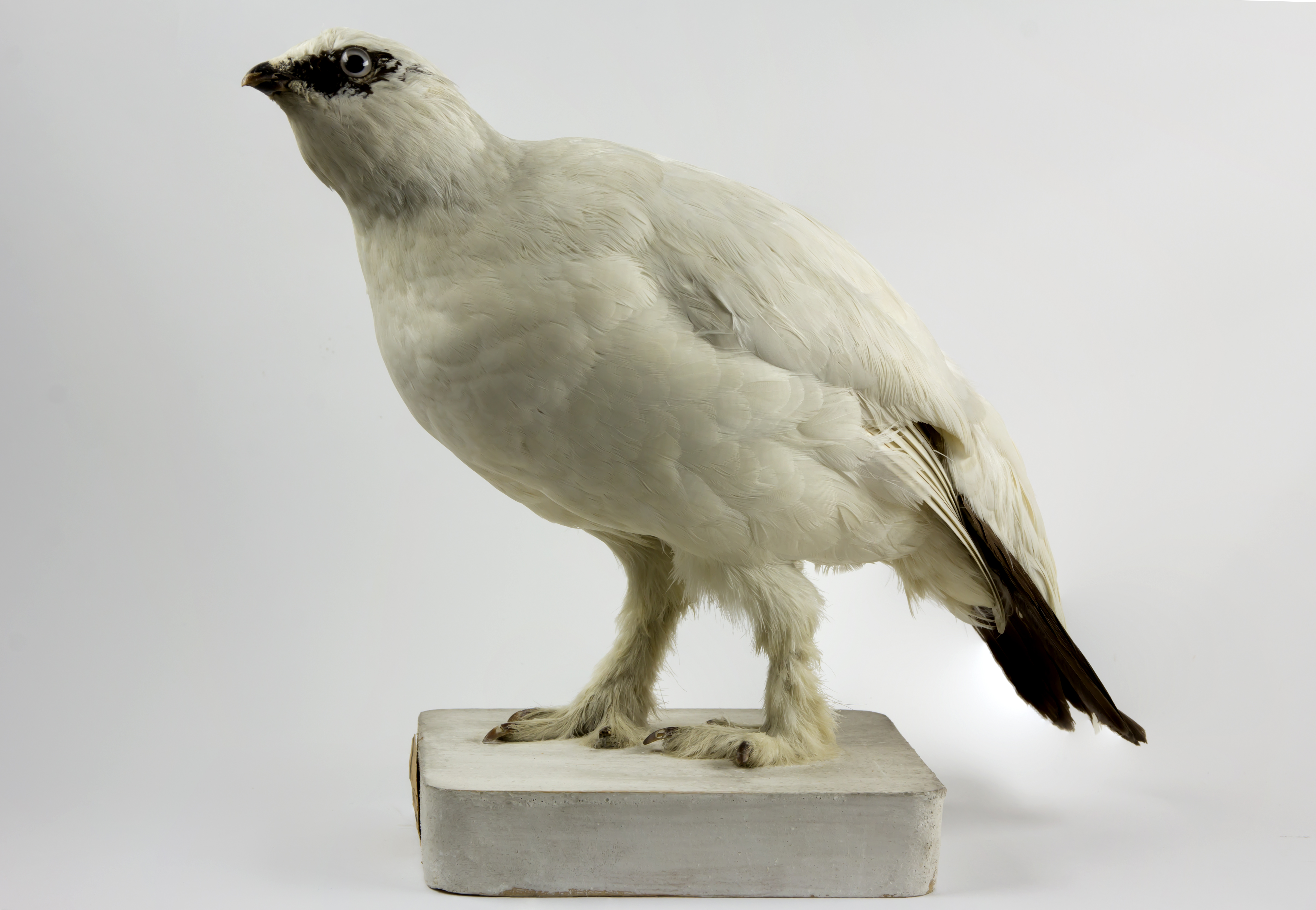|
Adamello Regional Park
The Adamello Regional Park ( it, Parco regionale dell'Adamello) is a nature reserve in Lombardy, Italy. Established in 1983, it encompasses the Lombard portion of the Adamello-Presanella Alps; together with the adjacent Stelvio National Park, Swiss National Park and Adamello Brenta Natural Park, it forms the largest protected area in the Alps, nearly 400,000 hectares. The park has an area of over 50,000 hectares, ranging in elevation from 390 to 3,539 meters above sea level. The Adamello Glacier, the largest glacier in Italy (16 square kilometres), is located within the park. The park's fauna includes the brown bear, the wolf, the red deer, the roe deer, the alpine ibex, the chamois, the marmot, the stoat, the golden eagle, the rock ptarmigan and the western capercaillie. Twenty-five mountain huts, eight mountain shelters and over a thousand kilometers of hiking paths are located in the park's territory. References External links Official website {{Authority control Adame ... [...More Info...] [...Related Items...] OR: [Wikipedia] [Google] [Baidu] |
Lombardy
Lombardy ( it, Lombardia, Lombard language, Lombard: ''Lombardia'' or ''Lumbardia' '') is an administrative regions of Italy, region of Italy that covers ; it is located in the northern-central part of the country and has a population of about 10 million people, constituting more than one-sixth of Italy's population. Over a fifth of the Italian gross domestic product (GDP) is produced in the region. The Lombardy region is located between the Alps mountain range and tributaries of the Po river, and includes Milan, the largest metropolitan area in the country, and among the largest in the European Union (EU). Of the fifty-eight UNESCO World Heritage Sites in Italy, eleven are in Lombardy. Virgil, Pliny the Elder, Ambrose, Gerolamo Cardano, Caravaggio, Claudio Monteverdi, Antonio Stradivari, Cesare Beccaria, Alessandro Volta and Alessandro Manzoni; and popes Pope John XXIII, John XXIII and Pope Paul VI, Paul VI originated in the area of modern-day Lombardy region. Etymology The name ... [...More Info...] [...Related Items...] OR: [Wikipedia] [Google] [Baidu] |
Alpine Ibex
The Alpine ibex (''Capra ibex''), also known as the steinbock, bouquetin, or simply ibex, is a species of wild goat that lives in the mountains of the European Alps. It is a sexually dimorphic species: males are larger and carry longer, curved horns than females. Its coat colour is typically brownish grey. Alpine ibex tend to live in steep, rough terrain near the snow line. They are also social, although adult males and females segregate for most of the year, coming together only to mate. Four distinct groups exist; adult male groups, female-offspring groups, groups of young individuals, and mixed-sex groups. During the breeding season, males fight for access to females, and use their long horns in agonistic behaviour. After being extirpated from most areas by the 19th century, the Alpine ibex was successfully reintroduced to parts of its historical range. All individuals living today descend from the stock in Gran Paradiso National Park in Aosta Valley and Piemonte (Italy), a n ... [...More Info...] [...Related Items...] OR: [Wikipedia] [Google] [Baidu] |
Nature Parks Of Italy
Nature, in the broadest sense, is the physical world or universe. "Nature" can refer to the phenomena of the physical world, and also to life in general. The study of nature is a large, if not the only, part of science. Although humans are part of nature, human activity is often understood as a separate category from other natural phenomena. The word ''nature'' is borrowed from the Old French ''nature'' and is derived from the Latin word ''natura'', or "essential qualities, innate disposition", and in ancient times, literally meant "birth". In ancient philosophy, ''natura'' is mostly used as the Latin translation of the Greek word ''physis'' (φύσις), which originally related to the intrinsic characteristics of plants, animals, and other features of the world to develop of their own accord. The concept of nature as a whole, the physical universe, is one of several expansions of the original notion; it began with certain core applications of the word φύσις by pre-Socr ... [...More Info...] [...Related Items...] OR: [Wikipedia] [Google] [Baidu] |
Hiking Path
A trail, also known as a path or track, is an unpaved lane or small road usually passing through a natural area. In the United Kingdom and the Republic of Ireland, a path or footpath is the preferred term for a pedestrian or hiking trail. The term is also applied in North America to routes along rivers, and sometimes to highways. In the US, the term was historically used for a route into or through wild territory used by explorers and migrants (e.g. the Oregon Trail). In the United States, "trace" is a synonym for trail, as in Natchez Trace. Some trails are dedicated only for walking, cycling, horse riding, snowshoeing or cross-country skiing, but not more than one use; others, as in the case of a bridleway in the UK, are multi-use and can be used by walkers, cyclists and equestrians alike. There are also unpaved trails used by dirt bikes and other off-road vehicles, and in some places, like the Alps, trails are used for moving cattle and other livestock. Usage In ... [...More Info...] [...Related Items...] OR: [Wikipedia] [Google] [Baidu] |
Mountain Shelter
A mountain hut is a building located high in the mountains, generally accessible only by foot, intended to provide food and shelter to mountaineers, climbers and hikers. Mountain huts are usually operated by an Alpine Club or some organization dedicated to hiking or mountain recreation. They are known by many names, including alpine hut, mountain shelter, mountain refuge, mountain lodge, and mountain hostel. It may also be called a refuge hut, although these occur in lowland areas (e.g. lowland forests) too. Mountain huts can provide a range of services, starting with shelter and simple sleeping berths. Some, particularly in remote areas, are not staffed, but others have staff which prepare meals and drinks and can provide other services, including providing lectures and selling clothing and small items. Mountain huts usually allow anybody to access their facilities, although some require reservations. While shelters have long existed in mountains, modern hut systems date back a ... [...More Info...] [...Related Items...] OR: [Wikipedia] [Google] [Baidu] |
Mountain Hut
A mountain hut is a building located high in the mountains, generally accessible only by foot, intended to provide food and shelter to mountaineers, climbers and hikers. Mountain huts are usually operated by an Alpine Club or some organization dedicated to hiking or mountain recreation. They are known by many names, including alpine hut, mountain shelter, mountain refuge, mountain lodge, and mountain hostel. It may also be called a refuge hut, although these occur in lowland areas (e.g. lowland forests) too. Mountain huts can provide a range of services, starting with shelter and simple sleeping berths. Some, particularly in remote areas, are not staffed, but others have staff which prepare meals and drinks and can provide other services, including providing lectures and selling clothing and small items. Mountain huts usually allow anybody to access their facilities, although some require reservations. While shelters have long existed in mountains, modern hut systems date back ... [...More Info...] [...Related Items...] OR: [Wikipedia] [Google] [Baidu] |
Western Capercaillie
The western capercaillie (''Tetrao urogallus''), also known as the Eurasian capercaillie, wood grouse, heather cock, cock-of-the-woods, or simply capercaillie , is a heavy member of the grouse family and the largest of all extant grouse species. The heaviest-known specimen, recorded in captivity, had a weight of . Found across Europe and the Palearctic, this primarily-ground-dwelling forest grouse is renowned for its courtship display. This bird shows extreme sexual dimorphism, with males nearly twice the size of females. The global population is listed as "least concern" under the IUCN, although the populations of central Europe are declining and fragmented, or possibly extirpated. The western capercaillie is one of two living species under the genus ''Tetrao'', which also includes the lesser-known black-billed capercaillie. Etymology The word ''capercaillie'' is a corruption of the Scottish Gaelic ''capall coille'' () "Horse of the jungle". The Scots borrowing is spelled ''cap ... [...More Info...] [...Related Items...] OR: [Wikipedia] [Google] [Baidu] |
Rock Ptarmigan
The rock ptarmigan (''Lagopus muta'') is a medium-sized game bird in the grouse family. It is known simply as the ptarmigan in the UK. It is the official bird for the Canadian territory of Nunavut, where it is known as the ''aqiggiq'' (ᐊᕿᒡᒋᖅ), and the official game bird for the province of Newfoundland and Labrador. In Japan, it is known as the ''raichō'' (雷鳥), which means "thunder bird". It is the official bird of Gifu, Nagano, and Toyama Prefectures and is a protected species nationwide. Unlike many arctic bird species, ptarmigan do not gain substantial mass to hibernate over winter. Etymology The ptarmigan's genus name, ''Lagopus'', is derived from Ancient Greek ''lagos'' (λαγώς ''lagṓs''), meaning "hare", + ''pous'' (πούς ''poús''), "foot", in reference to the bird's feathered legs. The species name, ''muta'', comes from New Latin and means "mute", referring to the simple croaking song of the male. It was for a long time misspelt ''mutus'', in the ... [...More Info...] [...Related Items...] OR: [Wikipedia] [Google] [Baidu] |
Golden Eagle
The golden eagle (''Aquila chrysaetos'') is a bird of prey living in the Northern Hemisphere. It is the most widely distributed species of eagle. Like all eagles, it belongs to the family Accipitridae. They are one of the best-known bird of prey, birds of prey in the Northern Hemisphere. These birds are dark brown, with lighter golden-brown plumage on their napes. Immature eagles of this species typically have white on the tail and often have white markings on the wings. Golden eagles use their agility and speed combined with powerful feet and large, sharp talons to hunt a variety of prey, mainly hares, rabbits, and marmots and other ground squirrels. Golden eagles maintain home ranges or territories that may be as large as . They build large bird nest, nests in cliffs and other high places to which they may return for several breeding years. Most breeding activities take place in the spring; they are monogamous and may remain together for several years or possibly for life. Fe ... [...More Info...] [...Related Items...] OR: [Wikipedia] [Google] [Baidu] |
Stoat
The stoat (''Mustela erminea''), also known as the Eurasian ermine, Beringian ermine and ermine, is a mustelid native to Eurasia and the northern portions of North America. Because of its wide circumpolar distribution, it is listed as Least Concern on the IUCN Red List. It is distinct from the long-tailed weasel (''Neogale frenata''), also known as the "masked ermine", or "big stoat"; the two species are visually similar, especially the black tail tip. The name ermine () is used for species in the genus '' Mustela'', especially the stoat, in its pure white winter coat, or the fur thereof. Introduced in the late 19th century into New Zealand to control rabbits, the stoat has had a devastating effect on native bird populations. It was nominated as one of the world's top 100 "worst invaders". Ermine fur was used in the 15th century by Catholic monarchs, who sometimes used it as the mozzetta cape. It has long been used on the ceremonial robes of members of the UK House of Lords. ... [...More Info...] [...Related Items...] OR: [Wikipedia] [Google] [Baidu] |
Marmot
Marmots are large ground squirrels in the genus ''Marmota'', with 15 species living in Asia, Europe, and North America. These herbivores are active during the summer, when they can often be found in groups, but are not seen during the winter, when they hibernate underground. They are the heaviest members of the squirrel family. Description Marmots are large rodents with characteristically short but robust legs, enlarged claws which are well adapted to digging, stout bodies, and large heads and incisors to quickly process a variety of vegetation. While most species are various forms of earthen-hued brown, marmots vary in fur coloration based roughly on their surroundings. Species in more open habitat are more likely to have a paler color, while those sometimes found in well-forested regions tend to be darker. Marmots are the heaviest members of the squirrel family. Total length varies typically from about and body mass averages about in spring in the smaller species and in aut ... [...More Info...] [...Related Items...] OR: [Wikipedia] [Google] [Baidu] |
Chamois
The chamois (''Rupicapra rupicapra'') or Alpine chamois is a species of goat-antelope native to mountains in Europe, from west to east, including the Alps, the Dinarides, the Tatra and the Carpathian Mountains, the Balkan Mountains, the Rila–Rhodope massif, Pindus, the northeastern mountains of Turkey, and the Caucasus. The chamois has also been introduced to the South Island of New Zealand. Some subspecies of chamois are strictly protected in the EU under the European Habitats Directive. Names The English name comes from French . The latter is derived from Gaulish ''camox'' (attested in Latin, 5th century), itself perhaps borrowing from some Alpine language (Raetic, Ligurian). The Gaulish form also underlies German , , , Italian , Ladin . The usual pronunciation for the animal is or , approximating the French pronunciation . However, when referring to chamois leather, and in New Zealand often for the animal itself, it is , and sometimes spelt ''shammy'' or ''chamy'' ... [...More Info...] [...Related Items...] OR: [Wikipedia] [Google] [Baidu] |


.jpg)
.jpg)





_Chamois.png)